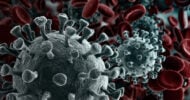by Stella Safo
It is Saturday night at an Emergency Department (ED) in Boston, MA and I am faced with a medical student’s dream dilemma: which one of the many interesting cases should I observe? Should I watch trauma surgeons operate on the 17-year-old gunshot victim or work with the ED docs to assess whether a 59-year-old woman is having an acute stroke?
That is exactly what I adored about emergency medicine as a third year student: I could observe, in real time, a variety of patients with conditions that ran the gamut from splinters to near-death experiences.
It was not a surprise, then, that one of the first elective rotations I chose for my fourth year of medical school was emergency medicine. I thought I would love the fast pace and diverse patient populations in the ED. However, something happened on the way to fourth year.
Through my continuity outpatient clinic in a local community center, I had fallen in love with primary care. I had come to love sitting with patients in clinic and really getting to know them. While it did not always have the frenetic pace and excitement of the ED, ambulatory medicine provided something that I realized was central to my love of medicine—truly intimate patient-doctor interactions that allowed me to feel like I was not only my patients’ physician, but their confidant as well. I could see the full spectrum of patient illness, while getting to know my patients profoundly. So when I began my ED rotation, I found that the very things that had excited me in the past—the short patient visits, the high volume of cases, the unpredictability of the next diagnosis—seemed to grate at my nerves. I no longer enjoyed my 15 minutes with the alcoholic because I knew that the briefness of the medical visit and the lack of appropriate counseling would likely result in his quick return to another emergency department. I could no longer deal with not knowing whether the patient’s abdominal pain was irritable bowel disease or gastroenteritis because she had to be discharged for further workup outside the ED. While I still felt passionately about the need for excellent medical care in the acute setting, I knew that I couldn’t be the one to provide it.
This realization was in no way an indictment of emergency medicine. Rather, it was a further confirmation of what I was coming to learn about my personality in medicine. I have to thank my educators in the Emergency Department, not only for an exciting learning experience, but also for clarifying the role that I want to play in delivering high quality care: that of a primary care doctor.
Stella Safo is a medical student at Harvard Medical School. This post originally appeared at Primary Care Progress Notes.
Submit a guest post and be heard on social media’s leading physician voice.









![Working patients and health care [PODCAST]](https://www.kevinmd.com/wp-content/uploads/Working-patients-and-health-care-190x100.jpg)
![Supporting medical resident families [PODCAST]](https://www.kevinmd.com/wp-content/uploads/Supporting-medical-resident-families-190x100.jpg)



![A tribute to primary care [PODCAST]](https://www.kevinmd.com/wp-content/uploads/A-tribute-to-primary-care-190x100.jpg)
